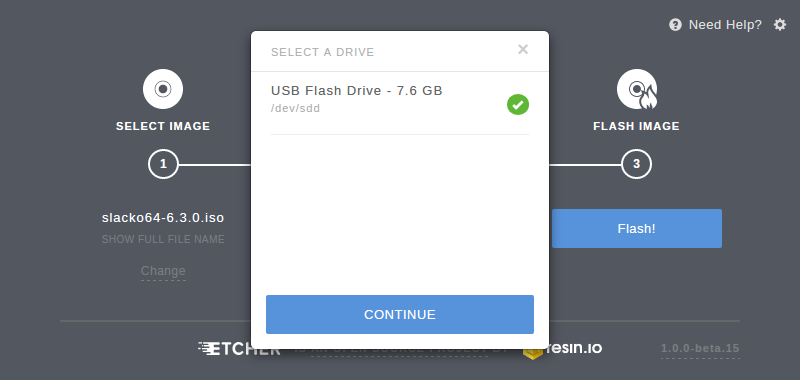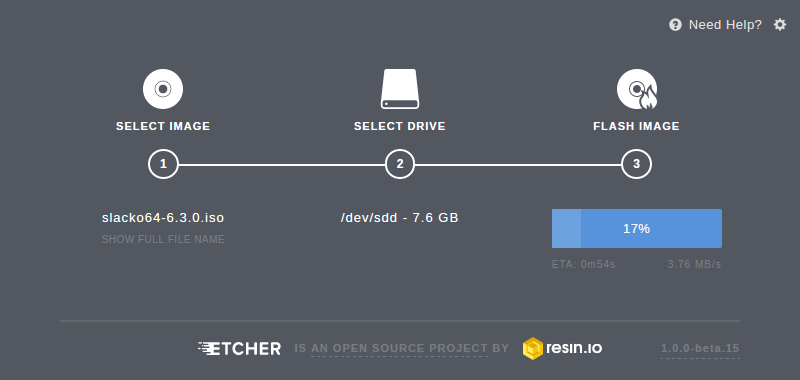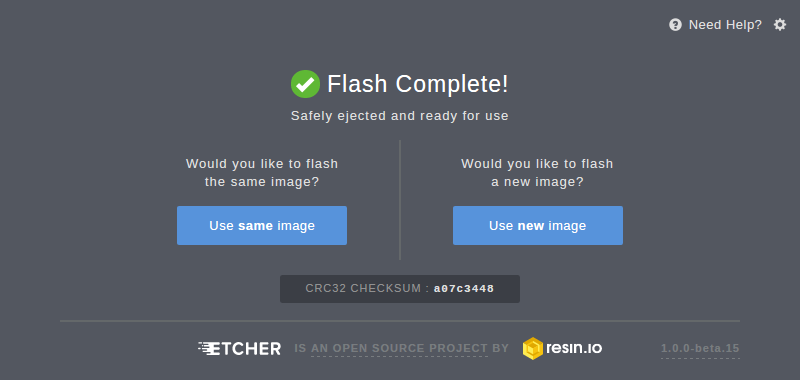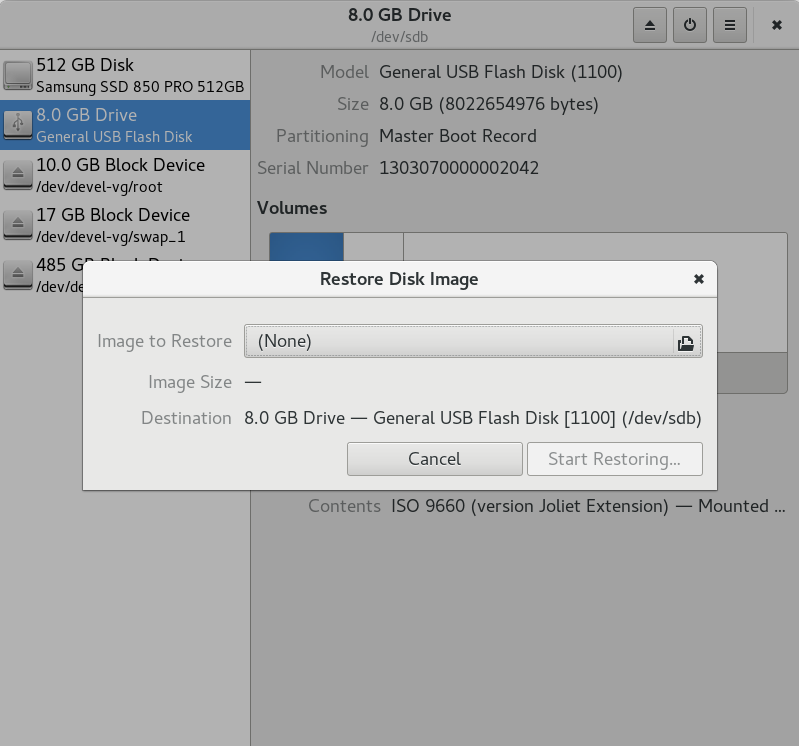Prepare an SD card¶
There are several ways to write the contents of a system image (ISO) onto flash storage, such as a flash drive or SD card.
In this guide, we will show you how to write images to flash storage using a few methods, and you are welcome to choose the option that best fits your needs:
Method |
Description |
|---|---|
Cross-platform utility you must first download and install on a host computer |
|
GNU/Linux system utility and therefore requires a host computer running GNU/Linux |
|
Command-line program that is available on GNU/Linux or macOS systems, and may be installed on Windows via Windows Subsystem for Linux (WSL) |
Note
These instructions assume that you have first downloaded and verified a system image.
Burn images using Etcher¶
The ISO file you downloaded and verified <software_pureos_installation_download> must now be written to an SD card/USB drive. There are many ways to do this but, in this tutorial, we are using a program called Etcher.
Follow instructions to download and verify the PureOS ISO image.
Note
Etcher supports various types of images: iso, img, dsk, hddimg, raw, zip, gz, bz2, xz.
Warning
This action will permanently erase all data on your SD Card/USB drive!
Launch Etcher and select your image:

Select your USB drive and click
Continue:

Click
Flash, and wait until Etcher flashes the image and verifies it:

Once it completes, your image is written to your SD Card or USB drive:

Burn images using GNOME Disks¶
Warning
This action will permanently erase all data on your SD Card/USB drive!
Open GNOME Disks and navigate to your USB drive:

2. Then press the menu button (☰, in the upper-right corner) and choose Restore Disk Image.
A pop-out window with option to choose which image will open:

3. After you press Start Restoring it will prompt you for your password.
Wait until it finishes and your image is written on your USB drive.
4. To boot from an SD card with a new image, you must insert your SD card and restart the device. At the boot screen (with the Purism image) you must press the escape button (top left on the keyboard) which will bring you to a menu of different drives you can boot from. Select the drive you need, in my case it was “USB MSC Drive Multiple Card Reader 1.00”
5. Follow the prompts as the new image boots.
Burn images using dd¶
Warning
Choosing the incorrect drive designation could cause you to unintentionally and permanently erase your valuable data, like the /home or root partition! Triple-check that you are using the correct block device when running this command!
This action will wipe all data on your SD Card/USB drive!
Insert USB drive but do not mount it; it must remain unmounted.
Open a terminal emulator and run
sudo fdisk -lto check drive designations.Run:
sudo dd bs=4M if=/path/to/PureOS-2.1.iso of=/dev/sdX status=progress && sync, replacing the X insdXwith your USB drive designation. For example:sdc(be very careful here!).The
synccommand is important; do not omit it!
The device is ready after the dd command finishes without errors.